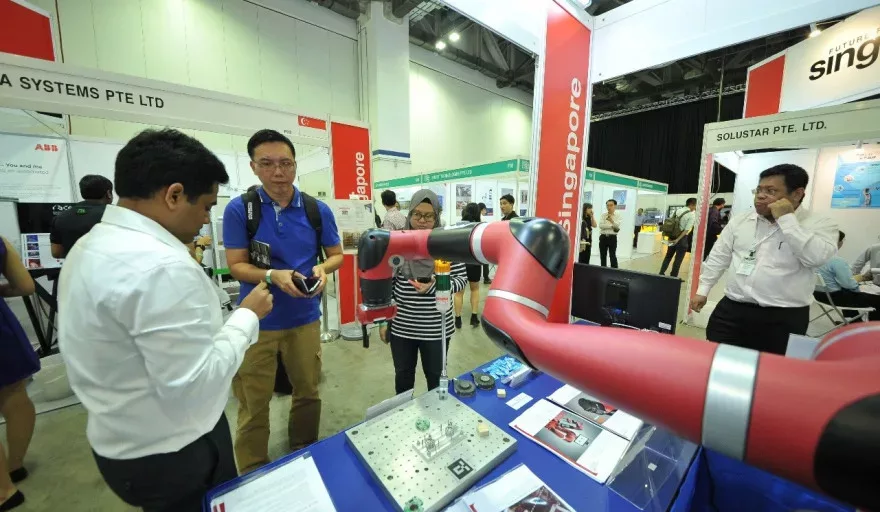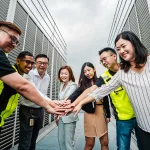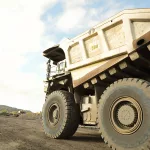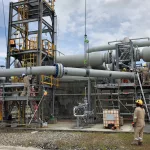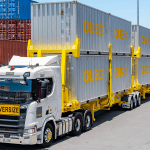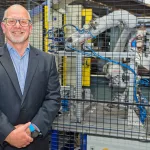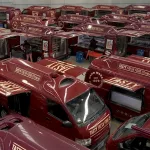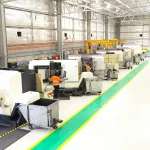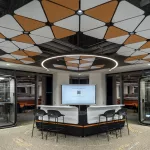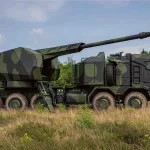In a recent news report, Singapore has been singled out to be worst hit in regional labour markets (considering percentage of total workforce) by job displacement due to skills mismatch as a result of technology disruptions. The report shared that “about one-fifth of Singapore’s full-time equivalent workforce (20.6 per cent) will have their jobs displaced by 2028”.
The current trend of automation and data exchange which leverages on converging technologies including cyber-physical systems, cloud computing, the Internet of things, and cognitive computing, is ushering in a new dimension of working models that will transform our lives in the near future. With the maturing of Artificial Intelligence (AI) and Robotic deployment in automation solutions, there are emerging concerns on apparent threats regarding the replacement of jobs.
What does this mean? Is there no way to circumvent this “labour displacement tsunami”?
Singapore has overcome many challenges since our nation was founded. We have always discovered our own solutions to the problems which we encounter. This is but just another test on our perseverance. To do so, we must understand the major impacts on Singapore society.
There are four distinct aspects to consider, namely, Management Thinking, Operations Re-engineering, Skills Future and Technology Cohabitation.
- Management Thinking. Business is no longer business as usual. The digitization of the middleman has virtually re-defined the way businesses operate today. This requires management to re-think how they plan to run their businesses to stay relevant and survive in the new competitive landscape.
One case, in reference, points to the impact created by the rise of online stores. Big retail chain stores in the West have not been spared, and we have heard of reputable brand names which are compelled to sell their real estate to maintain their margin targets, and with that jobs displacement follows. The local retail chain stores have also been hit by this phenomenon. - Operations Re-engineering. Industry 4.0 has arrived and the model fosters what has been called a “smart factory” with decentralized decision-making. Over the Internet of Things, the new systems communicate and cooperate with each other, and with humans in real-time both internally within the organization and strategically across organizational services offered and used by participants of the value chain. As long as one organization is part of the value chain, it shall not be spared the snowballing effect.
As such, it is pertinent for business process, once again as in the Nineties, to re-engineer themselves leveraging on technology and with new found performance indicators. This re-engineering exercise is different from the previous one in that members of the eco-systems are affected and a tighter integration network must evolve.
How do we know that businesses are ready? Singapore has recently developed the Smart Industry Readiness Index (SIRI). This is a healthy indicator for companies to reference. - Skills Future. It is time to think about the skills necessary for our future relevance. Singapore is not new to this learning pattern; we have been effective in preparing our younger generation for their future and our education system has long been admired by our neighbours as well as countries around the world. This time we need to create a system that helps our current workforce to “un-learn old skills and re-learn new skills”.
This is not going to be easy, as many of us may look to retirement after decades of industry contribution. However, as our population ages and longevity lengthens, the retirement goalpost has also moved. To stay relevant in the upgraded business environment, the workforce must upgrade their competency, as some of their current skills become redundant. The new workers must be responsible for their own future skills program. - Technology Cohabitation. We cannot be left behind by technology, nor can we afford to allow technology to displace us. We must learn to work together with machines as co-workers. Intelligent machines are here to stay – like it or not. We must learn to master them and not be afraid of them. We must be able to “co-work” with them as our new colleagues in the industrial workforce.
To do so, we must build 21st century critical skills and learn to be the masters of technology. We need to be ready with relevant skills and must be resilient to changes.
Here are three crucial points to note for the new man-machine relationship.
- We must embrace change. Businesses must facilitate the acquisition of deeper skills and develop a workforce knowledgeable enough to manage technology and machines. It is also important for businesses to strengthen the nexus between the acquisition and utilization of skills and integrate deeply into the eco-system.
- We must shift into an integrated business model. New business models must shift from compartmentalized technical infrastructures to ecosystem enabling platforms aimed at much needed collaboration. This sets the stage for us to be on the lookout for avenues to form bridges between humans and technology.
- We must stay relevant. With the rapid pace of technological change, we will need to develop deep skills to stay relevant. Learning throughout life needs to be our way of life. We must learn to adapt to new job demands, or even switch jobs or industries as the economy transforms.
Technology will continue to become more human-centric to the point where it will introduce transparency between people, businesses and things. These technologies extend and enable smarter living, work, and other spaces we encounter. Transparent and immersive experiences with technology are mostly on their way to the peak or just about to cross the line. The smart workspace will soon be here, probably earlier than expected in the near future.
As machines become more capable, and increasingly more intelligent, human workers must unite with machines in the next generation of working models. The factory models have some degree of experience in man-machine working relationships, but the white collar workers will need some experience sharing.
To be effective, technology skills and adaptive skills will have to become core competencies. This will have a major impact on our education model. It will change the way we learn, work and live, in order to adapt and survive in this digital revolution.

